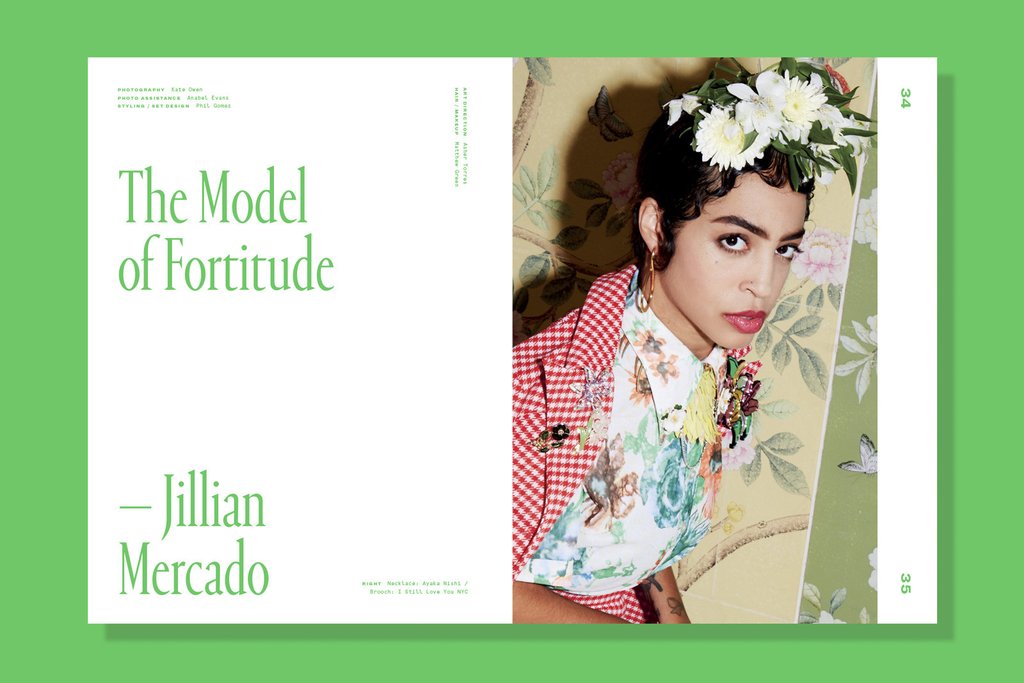Annie Rose Malamet is an educator, artist, and writer who received her MFA from The School of Visual Arts in 2015. She currently teaches at BRIC Arts Media in Downtown Brooklyn. As a curator, her recent exhibit Fatter IRL showcased the work of fat artists and saw positive feedback with features in major outlets such as The Huffington Post, Out Magazine, Nylon Magazine, Vice, and Paper Magazine. Her own visual work has been featured in Hyperallergic and Canadian Art, and she has contributed to Posture for many years writing about emerging queer and feminist artists.
Malamet spent her teen years as a “mopey, gay, goth kid” who always felt creative and admired artists, but never considered herself one. She explains, “I felt like my life was boring and I really had nothing to add to a larger cultural conversation.” Things changed in her sophomore year when she took a studio art class with a teacher she strongly disliked who had a ceramics background and would always have them working with clay, which she also hated because it dried out her skin. At some point, her high school had a short film festival and the teacher showed a few pieces that won the previous year. Malamet continues, “one film she showed us was a short experimental piece called Nymphette made by an older goth girl I kind of looked up to who went to college in Chicago and then became a dominatrix, thereby fueling the small town gossip. The other students snickered at the little Nymphette film, but I was really impressed and fascinated by this badass girl and the bravery it took to show that kind of work at our judgmental school. That year my friend made an ‘experimental film,’ a hilarious gem starring me and some friends in black lipstick walking around an abandoned playground. I was interested in making my own work but I didn’t start to think I could do something like that (and I didn’t have the confidence) until I was 20. I was majoring in Renaissance Art History and I started to make kind of knock off Richard Kern/Derek Jarman/Kenneth Anger videos of my friends dressed as Catholic Saints in classical painting scenarios with a bondage twist. I know, very edgy.”
Malamet enjoys the solitary experience that is getting lost in your own work, but her driving passion and background has always been in celebrating the artistic creativity of others, whether it be writing about their work or teaching students how to achieve their specific vision. “Curating seemed like a natural progression for me,” Malamet reflects, “I don’t think I consider myself a ‘curator.’ I’ve only curated one show and wouldn’t want to diminish the curatorial arts by slapping that label on myself! I think of myself as more of an ‘aspiring’ curator. The first show I curated, Fatter IRL was very successful so I’m anxious about living up to that! It was very much a group effort with all amazing artists that contributed.”
Her current installation, w4w, on view at Disclaimer Gallery in Brooklyn explores themes of isolation, alienation, and marginalization using the aesthetics Craigslist.com. By using handwritten renderings of the w4w “Missed Connections” section of the website, the project investigates these ads as object oriented ontology, through the lens of queer women’s relationships and desires. A woman-centric queer existence is by nature an isolating and dissociative experience. Queer women live on the intersection of misogyny and homophobia, which creates an existence that is both invisible and hypervisible; one feels both completely erased as well as constantly watched. The w4w “Missed Connections” demonstrates the isolation and alienation that many queer women feel.
Read my interview with Annie Rose Malamet below to learn more:
How does curating exhibitions fit in with other areas of your creative exploration? How do you choose and find the artists that you showcase?
Curating Fatter IRL fit in naturally with the other visual work I do. It was a totally DIY effort with no funding to speak of; I paid for everything out of my own pocket, including compensating the artists for art supplies and shipping. I’ve always been a proponent of the DIY ethos and that’s how I usually create. You can produce much more interesting work when you’re not worried about market approval or commercial success. It’s hard for me to think of art in commercial terms at all, actually. It’s something I’ve always struggled with. As an inter-disciplinary/multimedia/digital/video/performance artist I haven’t quite nailed down how to make my work “sellable.”
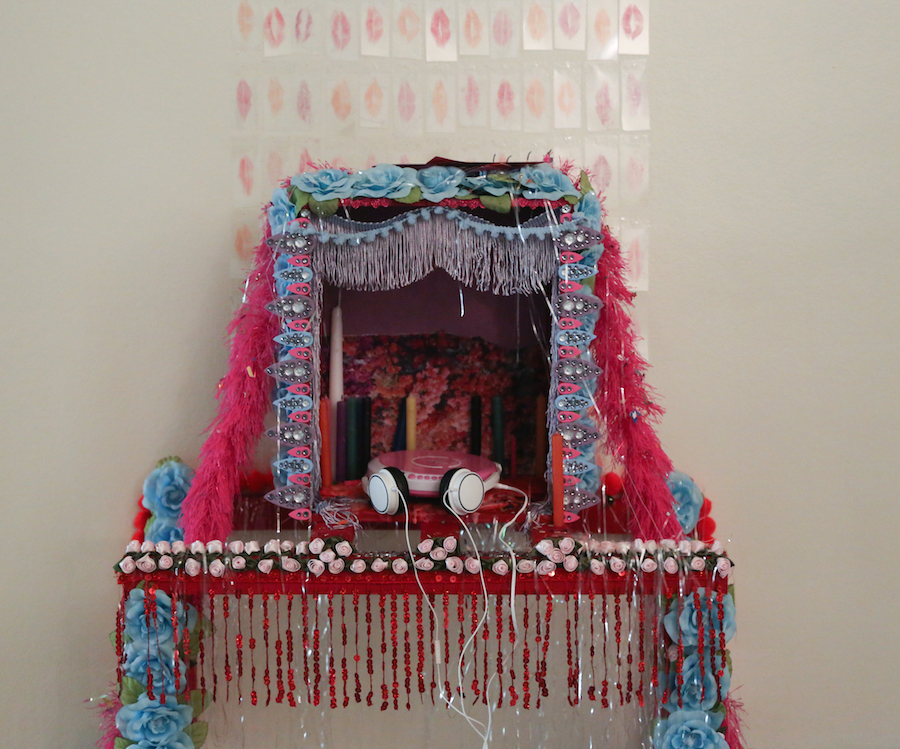
In terms of content, I’ve always been one of those “obnoxious” woman artists who can’t stop making “rape art or whatever” as it’s been referred to by male classmates before. In other words, I typically make work about my experiences with oppression and marginalization. I might be considered an identity artist, though there are many problems with that concept that writer/artist Hannah Black has written on at length. Fatness as an oppression is still a taboo topic in many circles. Curating a show of all fat identified artist was something I felt was needed in the art world and beyond.
When I curated the show, and when I write about other artists, I am always more interested in people who aren’t already established, well-known artists. Sometimes I look at upcoming exhibits and I’m like…”oh my god do we need ANOTHER show like this with the same (white man) artists over and over again?” There are so many people, especially young people, who are creating beautiful, prescient work who don’t get a platform. For Fatter IRL, I chose artists whose work I genuinely love and believe in. Some of the artists had large social media followings, but none of them had been written about by major publications ad nauseum. They’re all emerging artists, all people living with oppression in various forms.
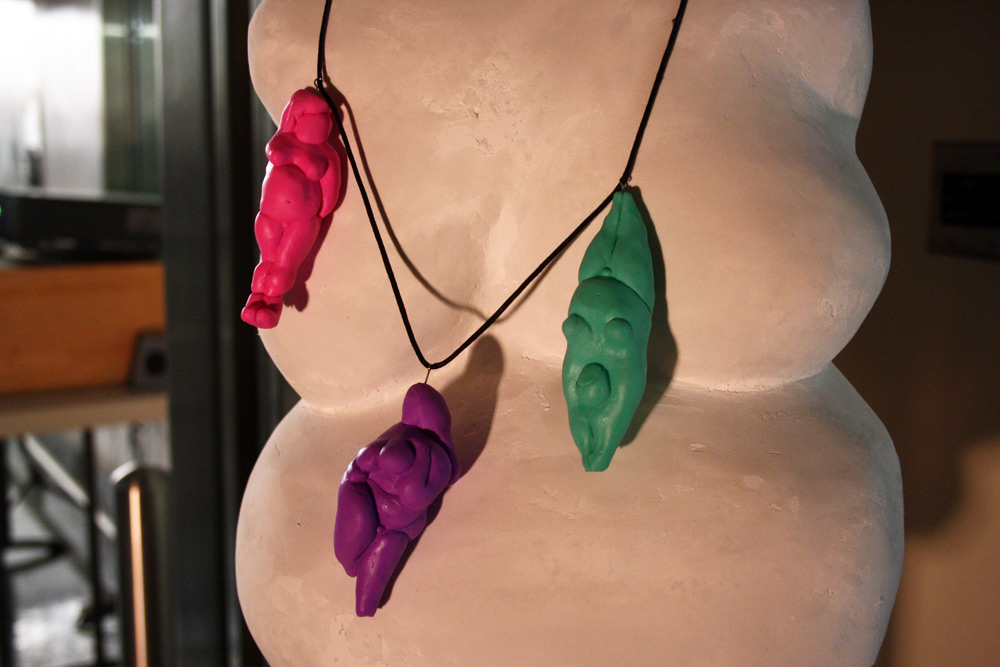
Tell us about some of your recent projects over the last couple of years and how that relates to particular themes and focal points that matter a lot to you.
In 2014 I had my first solo performance art piece at Vector Gallery called Dear Annie: EXORCISE YR INSECURITIES. I created a bedroom space with all my childhood stuffed animals and writhed in a bed like I was possessed while a recording of my own voice listed all my various insecurities. I encouraged the audience to throw holy water on me or interact with me in other ways, but no one did so I was just flailing around for an audience for an hour. It was a pretty intense experience. Again, I think about all those other women artists who came before me who have been accused of self involvement, like Hannah Wilke or Pipilotti Rist. While the piece was very much centered around me and my specific insecurities, I only put myself out there in such a way as to elicit a kind of catharsis for viewers as well as myself. I was most heavily influenced at the time by the 1993 video Monsters in the Closet by Jennifer Reeves. It’s a 16mm diaristic film that deals with themes like sexual abuse and lesbianism. It was born out of the riot grrrl era and definitely embodies that particular vibe that I was trying to capture in my performance. I’ve never grown out of my affinity with that era, though I am more critical now. I still feel like a teenage girl whose only solace is in her bedroom comforts, the childlike and the early adult mixed together in a creepily feminine and sexual amalgamation. Portia Munson captured that feeling perfectly in her most recent exhibit.
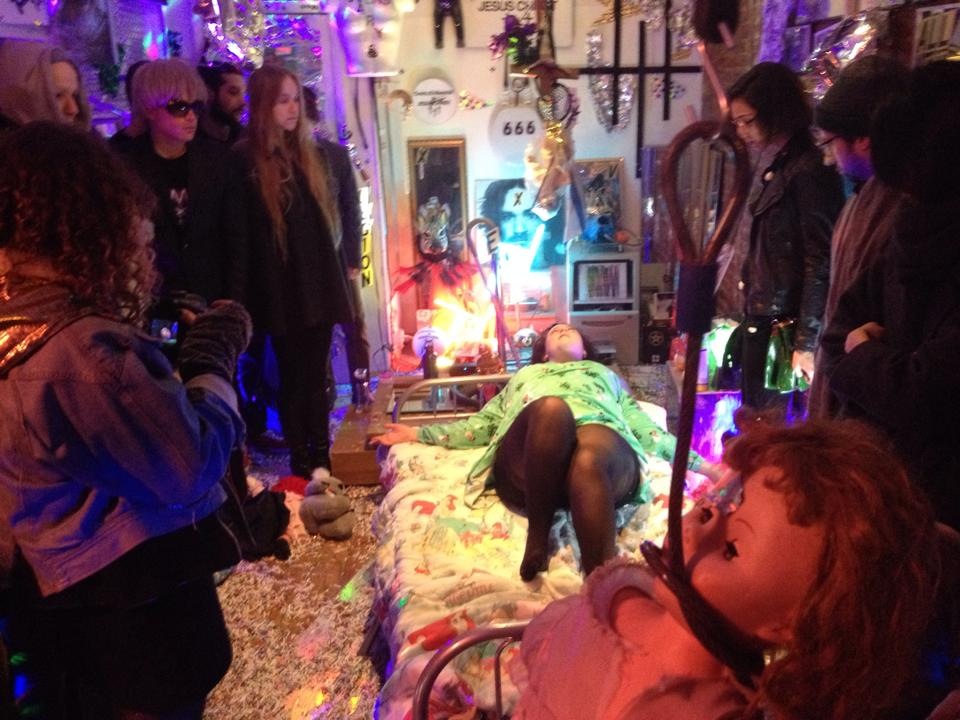
My graduate thesis project was a website called www.annyfanny.info. I’ve kept an archive of images, videos, emails, and instant messages since I was 14 that I used to create a wormhole of a site filled with photos and videos that build off of each other and get remixed and re-edited along the way. I wanted to use that sickly girlish aesthetic but with a “mall goth” feel instead the typical florals and pinks. I drew heavily on the work of my advisor, Ann Hirsch. Hirsch uses humor and this “over the top” emotional and self expository method to really get at the core of female sexual trauma. I wanted to talk about the trauma of discovering your sexuality on the internet as a teenage millennial. My projects after that used that same concept to explore the nature of sex work and anonymity in the digital age by using my own experiences. I created the piece HOOKER MEDITATION EXERCISE for a group show, which was part homage to New York movie escorts, part instructional meditation video for sex workers. I’m interested in this concept of hyper-visibility and isolation; I’m fascinated by the fact that we can be feel so alone, so alienated while still being under constant surveillance (be it because of the internet or because different identity markers make people extremely vulnerable to marginalization), and that actually this contributes to our isolation.
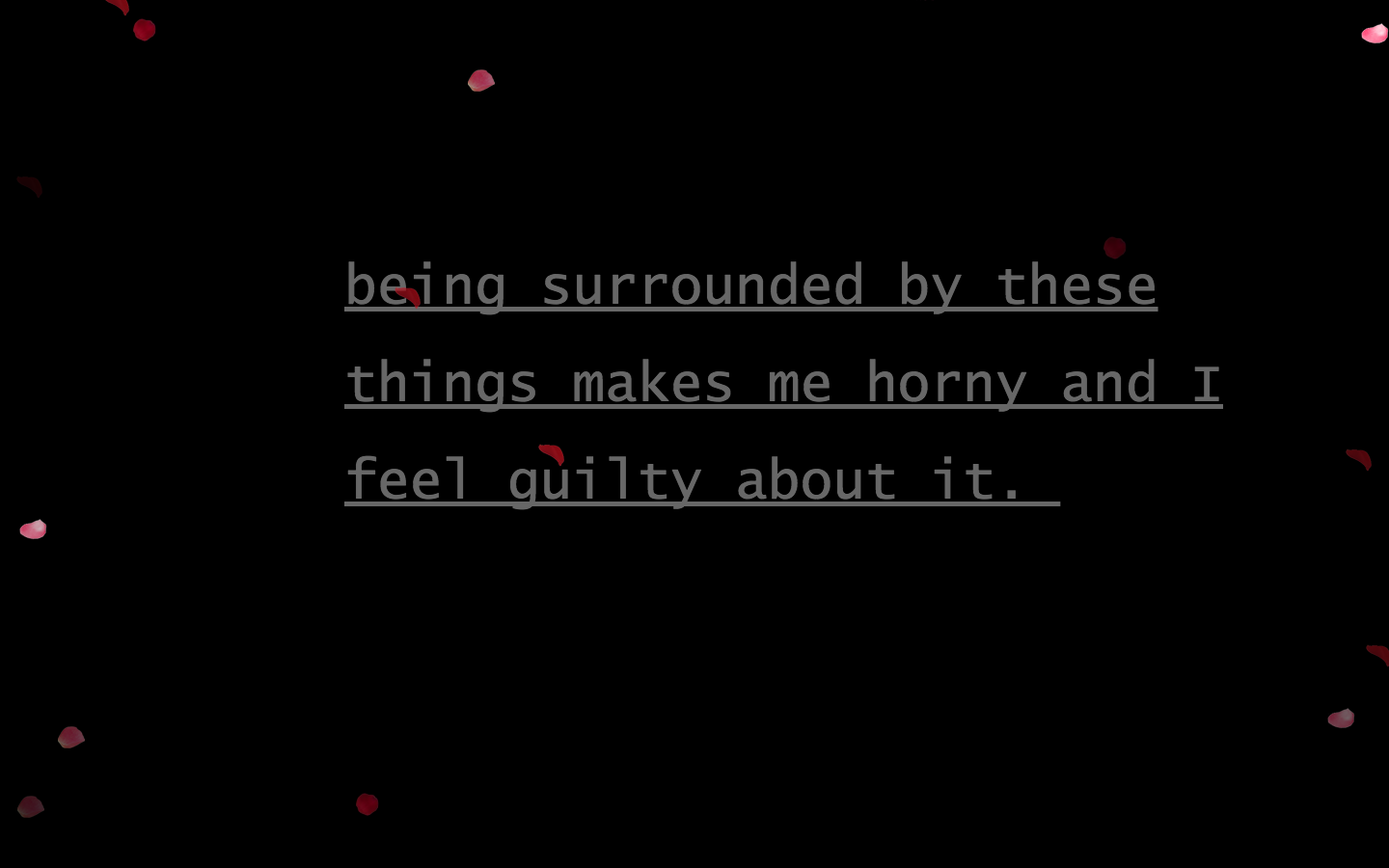
My current show called w4w at Disclaimer Gallery within Silent Barn in Bushwick, Brooklyn deals with these themes by using the women for women “missed connections” section of Craigslist.com. These online personals are explored as a site of isolation and hyper visibility as seen through the lens of queer women’s relationships and desires. I meditated on these digital ads by carefully copying them by hand. The process illustrates my desire to connect with other queer women, though the nature of reaching out to a missed connection seems almost an unfathomable distance. By displaying the ads on interactive screens, I wanted to speak to the push and pull between the handwritten and the digital, the intangible nature of loneliness and longing, and the concrete reality of oppression. I also included a manipulated and re-appropriated version of t.A.T.u’s music video for their song “All The Things She Said” with quotes from the featured Craigslist ads interspersed throughout. Again, I’m circling back to that early 2000s aesthetic as a way to talk about the trauma of being a visible/invisible being. It’s also a pretty romantic project and I tell people I’m still going through my “schmaltzy period.”
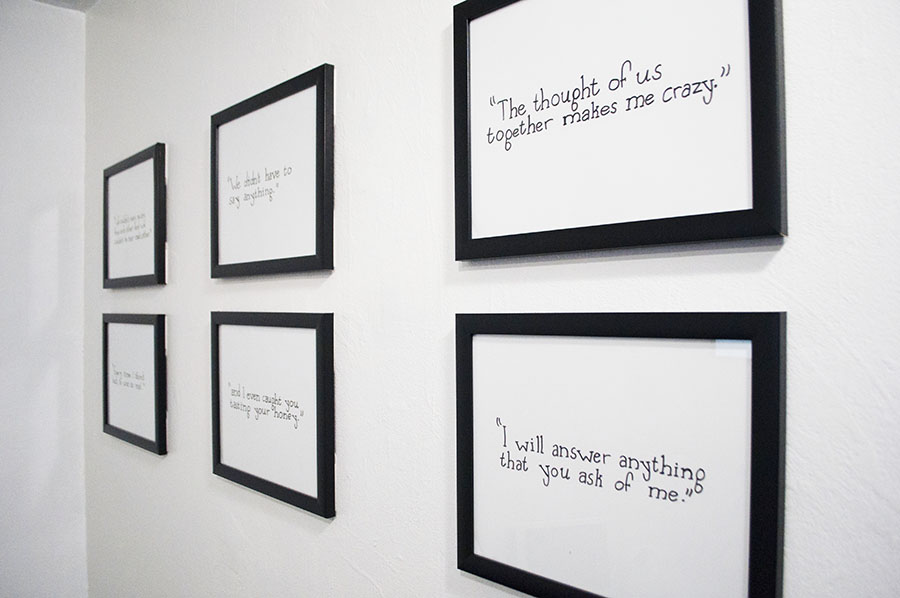
You have written for Posture since our launch, and have always been a strong voice for femme visibility and body positivity. How does your upcoming show, w4w, at Disclaimer Gallery reflect the importance of these concepts?
While femme visibility and fat positivity are issues that are close to my heart, I don’t see this show as reflective of those concepts. I wanted to present something that queer women of all gender expressions could see themselves in. That’s why most of the show is non-representational text art; the goal was to create something anonymous and blank. All of the missed connection ads are presented exactly how they appeared, without judgements or corrections. The sexuality, gender presentation, race, ability, etc of the women who wrote the ads is unknown unless it was specified. It’s up to the viewer to identify with the words presented to them. Many of the ads personally offend or disgust me, but they all feel real and important and inspired me to leave myself open to different women’s expressions of love, hate, desire, and longing.

How do you think we can push back against the misogyny and homophobia that queer women and nonbinary humyns often face?
Honestly, I struggle with remaining hopeful that things will change for any oppressed person. I am angry at the world pretty much 24/7 because being aware of your own cage is exhausting. Every time I think twice before being affectionate toward my girlfriend in public a part of my positive energy gets chipped away. Every time some random man stares at us like we are his personal porn video I numb myself out even further. I try to pick and choose my battles; yelling at every man on the street who harasses me or calls me “sweetheart” would destroy me physically and emotionally so I try to save my voice for places where it’s needed. Sometimes I regret missed opportunities, regret not speaking back because I was so frozen I couldn’t think of anything to say. For example, when I was in grad school working on my thesis a white male teacher asked me to switch out of his class. He felt that the work was too “titillating” and that he as a man could not critique it properly. I didn’t fight it because I truly didn’t even want this man to look at my work anyway, but I feel I should have pushed back more strongly so that other women/queer people would not have to deal with this person. However, I am trying to practice being more kind to myself and realizing that I am not responsible for how others choose to treat me, which I highly recommend as a way to push back against societal bullshit. Treat yourself like your own best friend whenever possible.
What is next for you? How can someone find you if they want to collaborate?
I hope to expand on the w4w project. What I like about the project and about re-appropriation art in general is that it can be remixed and re-presented in so many different ways. I’d love to create a book of dozens of handwritten ads. There is potential for a performative element as well by contacting the writers of the ads directly. I was originally inspired to do this project when I met a girl a few years ago by writing a missed connection for her. It would be cool to talk to other women who have met that way.
I’m also fiending to curate another show, and I hope to bring Fatter IRL to different cities, adding local artists along the way. I’ve been talking to different gallery spaces for a few months and hope to bring this dream to fruition.
If anyone would like to collaborate, you can contact me at [email protected] or via my instagram @fatgawth.
w4w will be on display from March 12th – April 8th at Disclaimer Gallery located at 603 Bushwick Ave, Brooklyn, New York 11206.
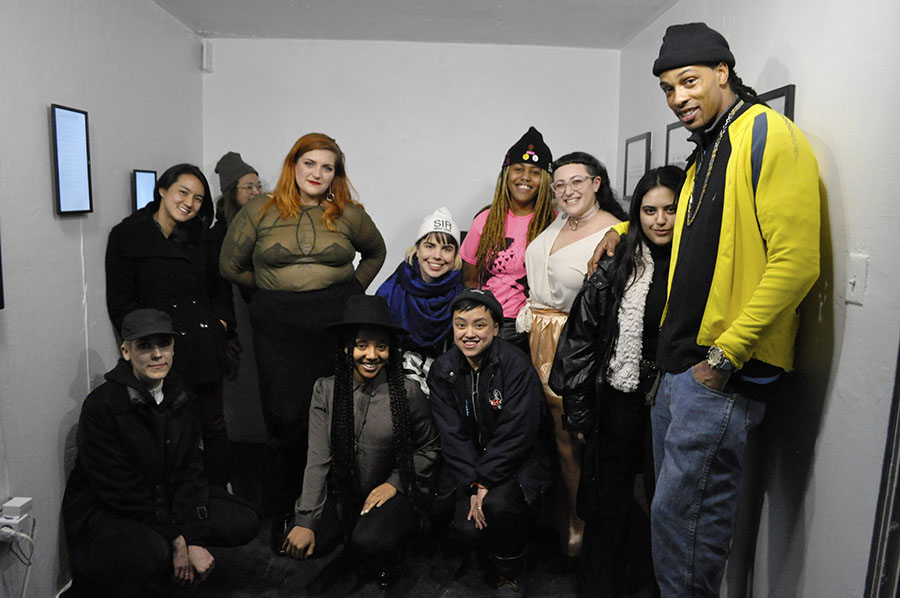
Please support Posture by choosing to become a member for only $45/year and receive benefits including our 168-page annual print magazine, VIP access to events, personal updates, and more. Please visit shop.posturemag.com for more information.

